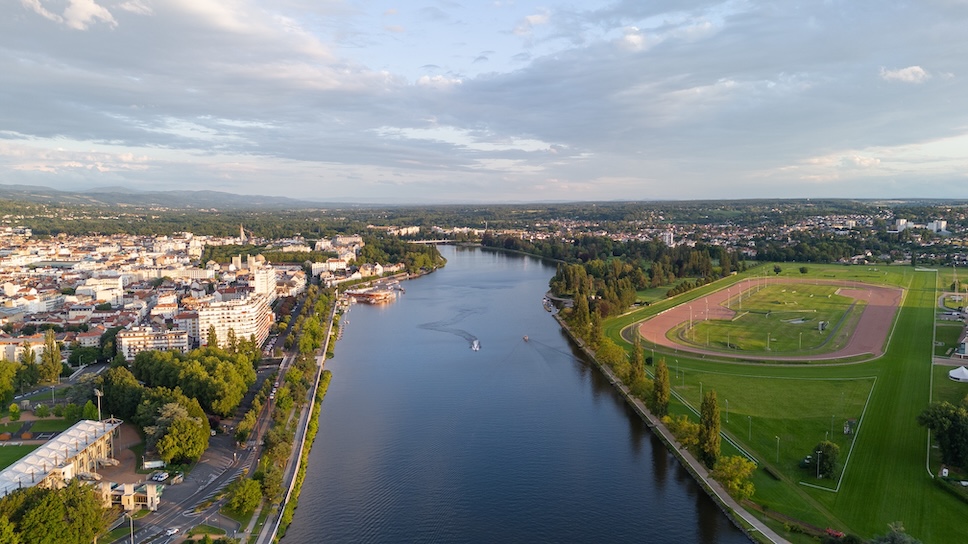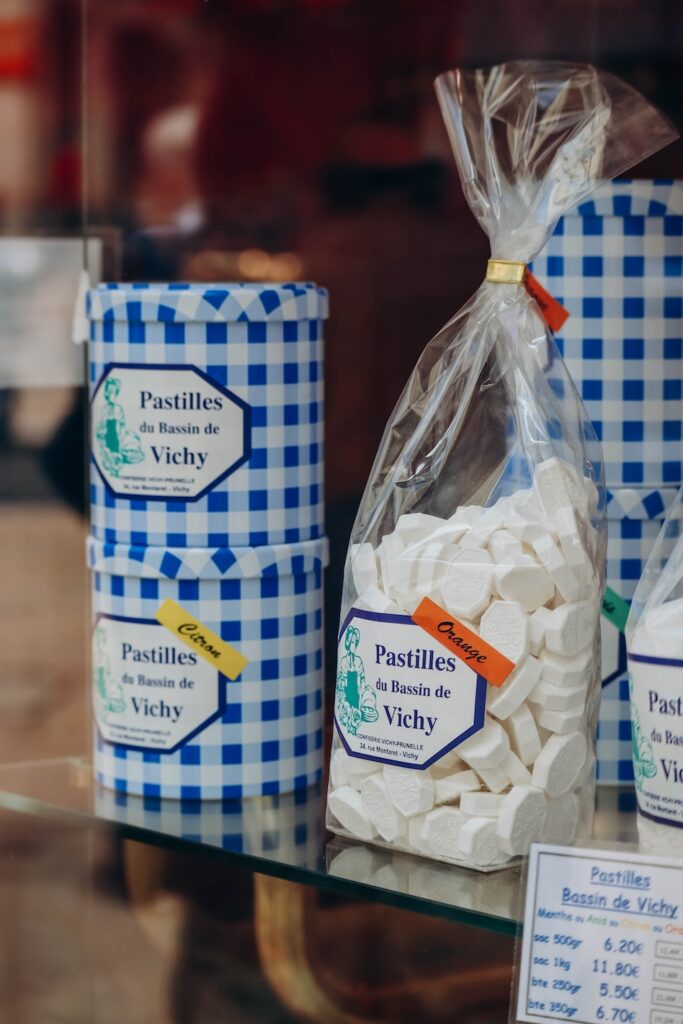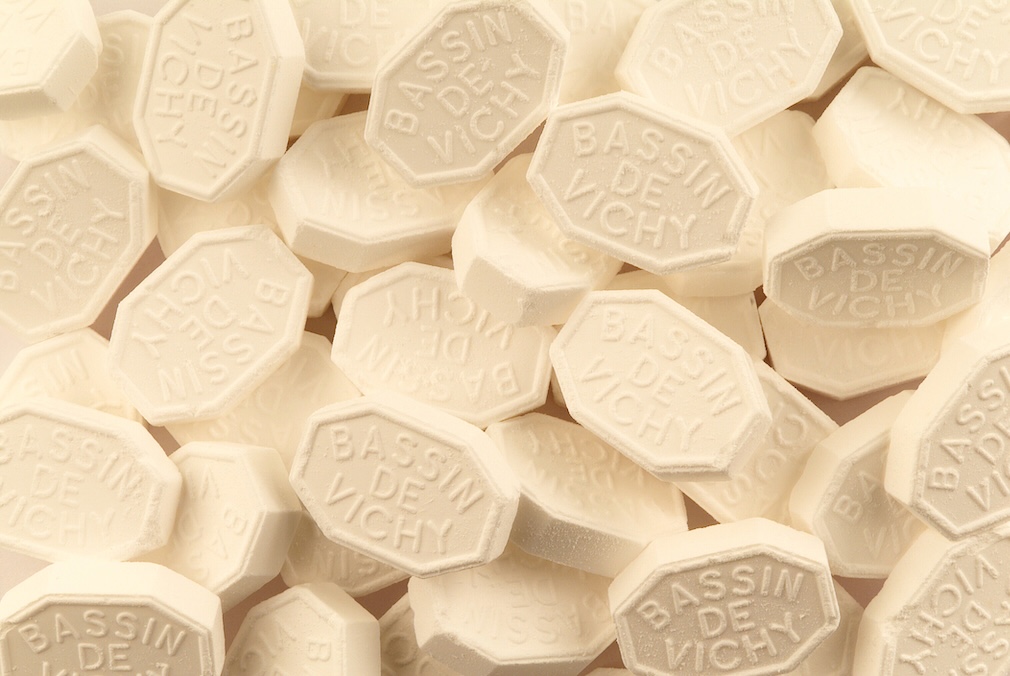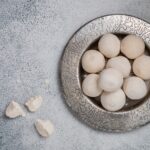You see that iconic tin. You know what’s inside. Those delicious and refreshing pastilles. But what you may not know is the aristocratic and medicinal and industrial fighting over this loved favorite.

The first Vichy pastilles were developed 190 years ago to aid digestion. In 1825 Jean-Pierre Darcet, a chemist and member of the Academy of Scientists and the Academy of Medicine, discovered the digestive virtues of bicarbonate of soda, which was one of the principal elements in the mineral spa waters of Vichy. He had the idea of extracting the gas from the waters and somehow turning it into a lozenge. Darcet joined forces with Vichyssoise pharmacist, Pierre Batilliat, who would find the precise method to create that lozenge – the first Vichy Pastille. Shortly after it was decided to add other minerals from the waters to make it more beneficial. In 1856 it was given the octagonal form recognizable today to differentiate it from other digestive lozenges.
The pastille was only for sale at pharmacies in Vichy. But its popularity increased when it was associated with Empress Eugénie, the wife of Napoleon III. It became a favorite with the aristocracy and an imperial law was passed which recognized the originality of the Vichy tablet.

As time passed, the Vichy digestive experienced an upheaval. Confectionary companies became interested in the pastille to sell as candy. The medical industry, which had solely supported the Vichy, lost a court case that would have allowed the chemists to keep control over the digestive. This led to the pastille losing its status as a medication and being labeled as a candy. The first industrial manufacture of the pastille began in 1954. Eventually, it was bought by Cadbury Schweppes in 2003 and by Kraft in 2010 which then became Mondelez in 2013. In 2016, Vichy was bought by French company Eurazeo where they are produced under a European label.
The pastilles are still produced at Vichy and still contain minerals extracted from the local waters. Bicarbonate of soda, calcium, magnesium, iron, potassium, lithium, and trace elements are extracted from the springs on the Allier River at Vichy and dried and ground before being mixed with sugar and glucose. The resulting paste is air dried and then flavoured with mint, lemon or aniseed. It is then put through a pressing machine, which gives it its octagonal form and printed with the name Vichy. The sweet contains 0.3% Vichy water minerals, while a version sold in pharmacies contains 3%. There is also a sugarless version sold as a sweet.
Vichy Pastilles tend to be a grown-up sweet. And its historic legacy has also been maintained – 79% of modern buyers come from ‘upper-income groups’.
Two Fun Vichy Pastilles Facts:
The pastilles were mentioned by French author Guy de Maupassant in his short story, “The Magic Couch.”
During World War II, the digestives were used as “branding and marketing” by Vichy France. By August 1942, shops in Vichy gave Vichy pastilles to customers, while other victuals were rationed. (However, the mayor of Vichy decided to mark sweets as cheese on their ration cards to avoid running out of them.)



